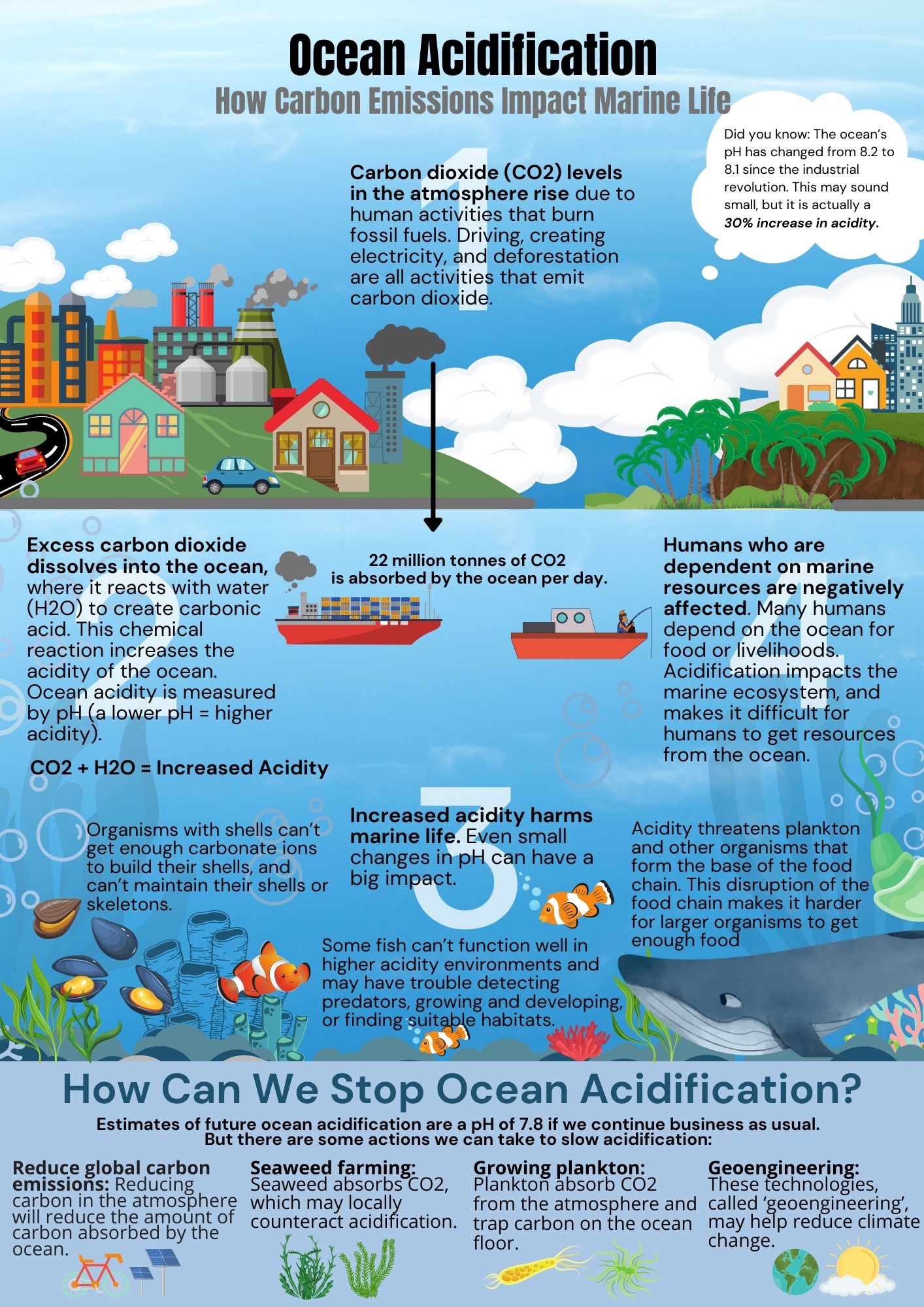At A Glance: What is Ocean Acidification?
Check out our ocean acidification infographic to learn how acidification works and how we can work to stop it.

Ocean Acidification Infographic Text
Did you know: The ocean’s pH has changed from 8.2 to 8.1 since the industrial revolution. This may sound small, but it is actually a 30% increase in acidity.
Carbon dioxide (CO2) levels in the atmosphere rise due to human activities that burn fossil fuels. Driving, creating electricity and deforestation are all activities that emit carbon dioxide.
Excess carbon dioxide dissolves into the ocean, where it reacts with water (H2O) to create carbonic acid. This chemical reaction increases the acidity of the ocean. Ocean acidity is measured by pH (a lower pH = higher acidity). Ocean acidification may also be worsened by pollution or fertilizer runoff.
Increased acidity harms marine life. Even small changes in pH can have a big impact.
Coral and shelled organisms: Organisms with shells can’t get enough carbonate ions to build their shells, and can’t maintain their shells or skeletons. Some animals’ shells may even start to disintegrate.
Fish: Some fish can’t function well in higher acidity environments and may have trouble detecting predators, growing and developing, or finding suitable habitats.
From plankton all the way to whales: Acidity threatens plankton and other organisms that form the base of the food chain. This disruption of the food chain makes it harder for larger organisms to get enough food.
Humans who are dependent on marine resources are negatively affected.
Many humans depend on the ocean for food or livelihoods. Acidification impacts the marine ecosystem, and makes it difficult for humans to get resources from the ocean. This impacts seafood production and other industries dependent on the ocean.
How Can We Stop Ocean Acidification?
Estimates of future ocean acidification are a pH of 7.8 if we continue business as usual. But there are some actions we can take to slow acidification:
- Reduce global carbon emissions
- Seaweed farming: Seaweed absorbs CO2, which may locally counteract acidification and help other organisms like corals grow
- Growing plankton: Plankton absorb CO2 from the atmosphere and trap carbon on the ocean floor. However, growing more plankton’s effect on the food chain is unknown.
- Geoengineering: Scientists might find a way to reduce carbon in the atmosphere or the acidity of oceans through technology that manipulates the environment. These technologies, called ‘geoengineering’, may help reduce climate change but may also have drastic side effects.